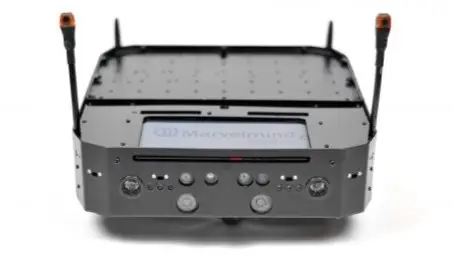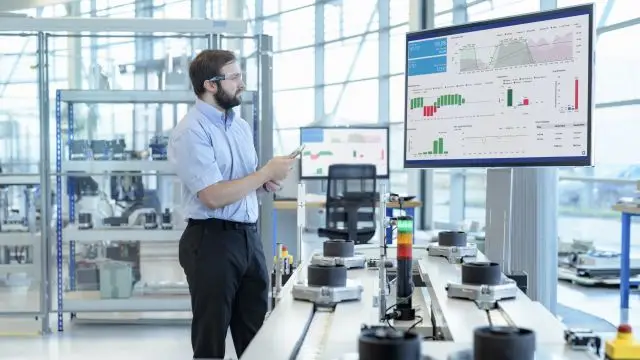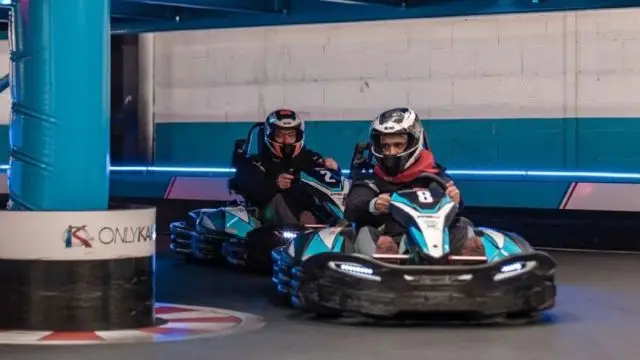Indoor positioning system applications
Autonomous robots, drones, forklifts, cranes, VR/AR, people, and many other industrial and special applications
There are many applications for indoor positioning systems starting from autonomous robots, drones, and AGVs to vehicles, forklifts, cranes, and people tracking.
Each application has some special requirements or focus. Thus, the solutions differ as well. Even more, the recommended solutions, technologies, and architectures may be different to address the applications’ needs best.
If your application is missing and incorrectly explained, please email us at info@marvelmind.com, and we will address it.
Executive Summary:
We discuss the main applications for indoor positioning systems and those that Marvelmind Robotics focuses on.
Autonomous mobile robots are classical users of RTLS. Equally, modern AGVs are synonyms with autonomous mobile robots, unlike old-fashioned wire- or magnetic tape-following AGVs.
The difference between a modern autonomous mobile robot and an old AGV is the difference between a self-driving electric car Level 5 and a tram.
Indoor robots usually require location and direction from indoor positioning systems because magnetometers work unreliably or don’t work indoors entirely. However, calculating a static pose or orientation is a non-trivial technical task, which is elegantly solved by the Marvelmind indoor positioning system with the Paired Beacons feature and is challenging for other, less accurate methods.
Autonomous indoor drones are effectively autonomous robots that operate in 3D (XYZ) while regular autonomous wheeled robots are usually happy with 2D (XY) tracking. Different floors don’t add much complexity for tracking because it is simply several layers of a 2D indoor positioning system.
Drones have other technical complications due to a lack of odometry, weight, size, and power supply constraints. Also, the cost of errors in RTLS for drones is significantly higher for drones. Drones crash sooner or later. Thus, building indoor positioning systems for drones is more complex than for autonomous robots.
It is worth noting that not all drones are the same. Small autonomous indoor drones are too small to carry the autopilot hardware. That is a fundamental difference between small-size and full-size drones. Small drones are still autonomous, but their brain and mind are not onboard. They carry a mobile beacon to know their location, but they blindly follow the commands from the system (remote brain and mind) when flying autonomously indoors.
Autonomous drones are primarily used in industrial applications for automatic inspection. That is a great solution, but there are less fancy but more reliable alternatives.
Another popular application for precise indoor positioning systems is automatic drone landing when optical methods are ineffective or RTK GPS is unavailable.
Tracking forklifts and similar vehicles indoors is the sweetest application for indoor positioning systems:
– There is a need to optimize the utilization of the vehicles
– There is a need to improve safety, prevent collisions and accidents
– Forklifts are large, and they don’t sneak into strange places
– They operate in 2D usually – easier to track than 3D
– They have onboard electricity – easier for mobile beacons
– They don’t have the weight and size limitations for mobile beacons
– They have modest requirements for location update rates
Thus, when we engage in a full-scale automation project, we recommend the end-users start with something simple like forklifts and, after succeeding, expand to people tracking for safety and productivity, autonomous robots, and only then to autonomous indoor drones.
Industrial automation is all about people:
– To provide safety to people
– To give people intelligent tasks instead of routines ones
– To optimize the existing process and reduce walking time
– To automate where it is possible to automate already now
Automation starts with data: who where doing what and why. Thus, indoor positioning and navigation system for people is in the core of everything.
There are very many branches in the tree of people tracking and people tracking applications:
– Shopping malls guiding
– Museums guiding
– Navigation inside airports, railway stations, ports, etc.
– Assigning the task based on proximity to the meter or object
– VR/AR
– Counting visitor
– Access to restricted areas
– Geo-fencing for people in the industrial environment
– Assisting AGVs and robots with preventing accidents with people
– Rescuing people in the events of accidents – finding them in time
– Monitoring their health conditions remotely
– Sports
The list of applications for people tracking indoors is very long indeed.
Marvelmind Robotics is mainly focusing on people tracking for industrial applications. However, nearly the same means can be used to track visitors, help to rehabilitate patients or guide visually impaired people in museums.
Though we operate in industrial automation, sometimes it appears that we work in the field of deep science or even ed-tech. Dozens and dozens of the world’s top universities, innovation labs and future labs of the world’s most innovative companies use our systems for all kinds of research and development projects.
It is difficult to cover all the areas where researchers used Marvelmind Indoor Positioning System:
– Autonomous robots of absolutely different forms
– Autonomous drones for different research projects
– Machine learning
– Swarms
– Architecture
– Marine science and autonomous boats
– Space and autonomous vehicles for the Moon
– NASA projects of different kinds
Cranes and hooks is a surprisingly large application for RTLS:
– Crane’s tracking
– Dangerous goods load tracking
– Hook tracking in XYZ + swing in several directions
– Geofencing zones between the load and vehicles/people
– Geo-fencing of crane tips in residential civil engineering
On the other hand, it shouldn’t be surprising that cranes and hooks shall be tracked. Cranes are one of the oldest industrial machines. They are different in size and tasks. The majority of those tasks are industrial. Thus, it is clearly the task for industrial indoor positioning systems like Marvelmind Indoor “GPS”.
There are cases when indoor positioning systems are the most optimal for seemingly outdoor applications, for example, autonomous boats, ships or other marine cases.
Following the purist approach to terminology, such positioning systems are better called RTLS rather than IPS. Even better – local positioning systems (LPS).
Among the cases related to boats and ships that our customers or potential customers approached us:
– Automatic guiding of a charger for the docked ferry
– Autonomous rescue boat docking to a larger ship
– All kinds of researchers of autonomous boats – pools before scaling
Sports is a demanding area for indoor positioning systems:
– High accuracy is very important
– High location update rate and low latency is important
– Size and weight is important
Among the sports, we have been engaged in:
– Hockey
– Ice skating
– Carting
– Half-pipe ski jumping
– Air hockey
– Horse riding
The field can certainly be expanded to:
– Indoor car racing
– Indoor drone racing
– BMX
There are many other sports where RTLS is playing important role already now or will play in the near future: basketball, football, bobsleigh, etc.
Indoor positioning systems give not not only location data, but also stream speed, acceleration – parameters that are very important to sportsmen and sportswomen, trainers, and fans.
VR and AR
Sometimes, the embedded tracking systems of VR/AR have technical issues and do not work well in an industrial environment, which is more challenging than in the perfect home or office environment. Thus, Marvelmind Indoor Positioning System helps them with ground truth and gives a second opinion about the current location of the VR/AR user to enhance the VR/AR systems’ sensor fusion data.
Guiding visitors is rather different than tracking people for industrial applications:
– They are just visitors – they are not professionals or employees
– They don’t have the skills to use the system
– They can be drastically different: kids and grand-grand-moms
– They don’t wear uniforms or helmets with embedded trackers
Even inside the field of tracking visitors, the applications and, as a result, requirements towards the RTLS differ a lot:
– Finding the gate at the airport
– Finding goods in the shopping mall
– Finding a piece of art in the museum
– Finding a person on the conference for matched meeting
If for professionals, we often talk mostly about tracking for safety and productivity. Then, for general visitors, we usually talk about guiding them. Guiding using phone or tablet applications applications
Also, requirements and tools used are rather different:
– High accuracy and reliability for industrial applications
– Moderate accuracy and reliability for general public
– Geo-fencing zones and other special features for professionals
– Easy to use and smooth experience for general visitors
– Special tags and professional tablets for professionals
– Nice and easy phone app for visitors
As a result:
– BLE, WiFi, and optical tracking for regular visitors
– Ultrasound or UWB when accuracy and reliability are crucial
We clearly distinguish between RTLS applications for “industrial professionals” and tracking or guiding “visitors”. Marvelmind Robotics tends to focus on industrial professionals.


